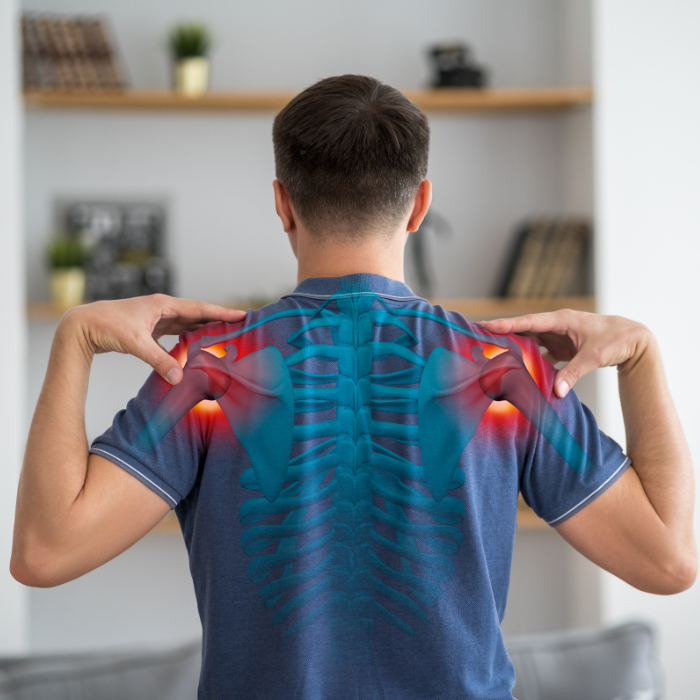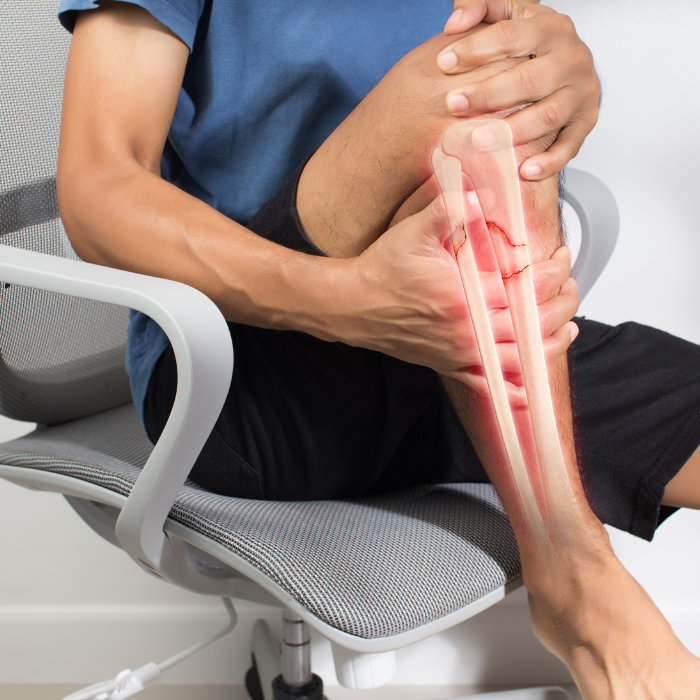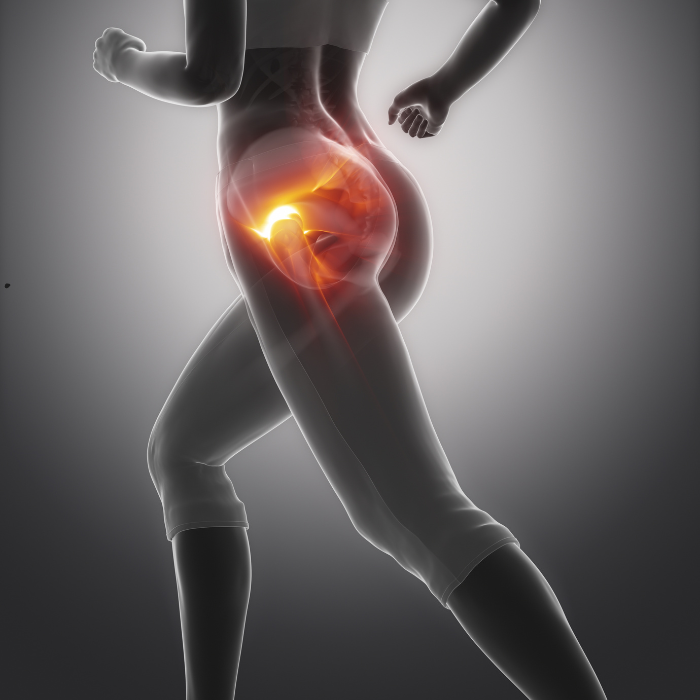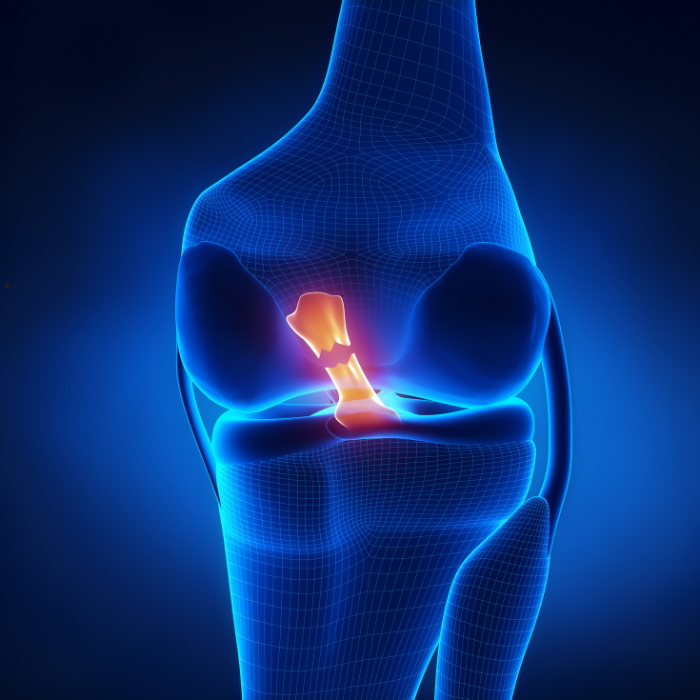

Types Of Orthopedic Treatment
Shoulder Replacement
The shoulder is considered an important and complex joint that helps the arm have a greater range of motion than any other joint. Shoulder replacement is a surgical procedure that addresses the source of discomfort and malfunction in the shoulder joint by replacing damaged portions with artificial components known as prostheses.
Read MoreKnee Replacement
Knee replacement turns out to be an essentially knee-saving surgery for patients who suffer from various conditions that might damage their knee in a way that needs to be treated. Knee replacement surgery refers to the substitution of the part of the knee that might be flawed or exhausted, but the part that is placed instead of the impaired part of the knee might be either constructed of plastic or metal.
Read MoreBone Fracture
A bone fracture can also be popularly named a broken bone. Fracture of bone is apparent in the cases wherein the bone cracks or even breaks up, because of any of the factors that exist like injury, trauma, or even any specific kind of illness.
Read MoreHip Replacement
Hip replacement surgery also called hip arthroplasty, is a surgical procedure that involves replacing a damaged or arthritic hip joint with a joint made of ceramic, metal, or plastic materials. The hip joint is made of a ball at the top of the femur or thigh bone, and a socket in the pelvis also called the hip bone. The surgery comprises the replacement of one or both parts.
Read MoreAnterior Cruciate Ligament
A ligament might be defined as a tissue that connects one bone to another to provide backing up and stability to the joints. The ligaments are constructed of mighty and stringy fibers of collagen that help the body to keep the bones composed, give stability to the joints, and even restrict enormous movement.
Read MoreArthroscopy Surgery
Arthroscopy Surgery is a congenital type of heart disease in which a hole in the heart is present that separates the heart’s lower chamber, known as the ventricles. Because of this, there may be significant effects on blood flow and oxygenation.
Read MoreWhat is Orthopedic Treatment?
It is a branch of medicine that focuses on treating, diagnosing, and preventing injuries and disorders affecting the musculoskeletal system, such as bones, muscles, tendons, and ligaments, which play an essential role in our overall health. The orthopedic treatment goal is to alleviate pain, improve mobility, restore functions, and enable individuals to live healthy lives. When musculoskeletal problems arise, they may typically cause pain, impact your quality of life, limit mobility, and be strenuous for your ability to perform everyday activities. By harnessing the recent advancements in orthopedic treatment in India, individuals may overcome pain, regain mobility, and rediscover their potential. This overview will delve into orthopedic treatment, benefits, and success rate and explore several options that have helped many individuals.
Types of Orthopedic Treatment: Finding The Right Solutions For Your Need
Orthopedic treatment options range from traditional to surgical intervention, depending on the seriousness and nature of the condition. Some common types of orthopedic treatment include physical therapy, bracing, and orthotics, which are imperative entrails that help patients recover from injuries or maintain incurable conditions. Here is a brief overview of each:
- Physical Therapy is a rehabilitation program that improves strength, function, and mobility through personalized exercise and stretches to stimulate healing and restrain further injury. Modalities like cold, heat, electrical stimulation, and ultrasound reduce inflammation and pain.
- Bracing and Orthotics: Bracings offer stability to affected joints or muscles with the help of external devices to alleviate pain, enhance mobility, and reduce inflammation. There are some types of Braces, which are mentioned below:
- Semi-rigid braces
- Rigid braces
- Elastic braces
Orthotics are custom-made shoe inserts and devices that support or correct biochemical problems and are used to treat problems like high arches, plantar fasciitis, or flat feet. There are some types of orthotics include:
- Arch supports
- Ankle braces
- Heel cups
- Prescription shoe inserts
These three main components of an orthopedic treatment often work together to provide comprehensive orthopedic care, helping patients attain optimal recovery and mobility. Orthopedic treatment options may include surgery, which are mentioned below:
Shoulder Replacement
It is a surgical procedure that replaces the damaged part of the shoulder with prostheses (an artificial component) to relieve pain and other signs or symptoms resulting from injury to the shoulder joint. Some risks and complications in shoulder replacement surgery may include dislocation, infection, blood clots, fracture, and implant loosening. Osteoarthritis, rheumatoid arthritis, osteonecrosis, rotator cuff injuries, and other inflammatory problems may damage the joint. Shoulder replacement options are the following:
- Anatomic total shoulder replacement
- Reverse total shoulder replacement
- Partial shoulder replacement
The procedure process may include reviewing signs or symptoms, a physical exam, computer tomography (CT), and X-rays of your shoulder. To ensure a safe recovery, follow your surgeon's instructions before or after the surgery.
Knee Replacement Surgery
It is a surgical procedure to resurface a knee damaged by arthritis and knee replacement surgery is also known as total knee replacement or knee arthroplasty. It helps to ease pain caused by arthritis, and individuals with problems like walking, getting up out of chairs, and climbing stairs need this surgery. Some risks and complications in orthopedic implants are nerve damage, infection, and blood clots, and the implants may loosen or become worn over time, which is used for knee replacement. Osteoarthritis, torn ligaments, fractures, traumatic arthritis, and torn cartilage may damage the joint. In this procedure, damaged bone or cartilage may be replaced with plastic parts and metal to resurface the knee joint.
Anterior Cruciate Ligament (ALC)
The anterior cruciate ligament is a basic ligament in the knee joint that helps with stability and movement. It prevents medial tibiofemoral joints and anterior tibial subluxation in the lateral, which is crucial for the pivot-shift process and provides 85% restrain force to anterior tibial displacement.
Hip Replacement Surgery
it is a surgical procedure to replace a painful hip joint with a prosthesis (an artificial joint), and Hip Replacement Surgery is also known as Hip arthroplasty or total hip arthroplasty. This surgery helps ease the pain while walking, standing, or participating in other everyday activities caused by arthritis. Complications with this procedure may include fractures, dislocation, leg length change, infections, and nerve damage. Conditions that may damage the joint are Osteoarthritis, traumatic arthritis, femoroacetabular impingement (FAI) syndrome, hip dysplasia, benign tumors, and other severe damages. During the procedure, your surgeon may remove the deceased hip joint and insert an artificial joint.
Arthroscopy surgery
In this minimally invasive procedure, a narrow tube with a video camera (arthroscope) treats joint problems. Arthroscopy surgery is done to diagnose and treat joint problems affecting the shoulder, knees, elbows, wrists, hips, and ankles. Risks and complications related to this surgery may include excessive bleeding or swelling, blood clots, infection, and tissue or nerve damage. During the surgery, a small incision may made through an arthroscope (a narrow tube with a video camera), and images transmitted to a high-definition video monitor.
Fracture Repair Surgery
It is a surgical procedure to fix a broken bone with the help of pins, rods, metal screws, or plates to hold it in place, and Fracture Repair Surgery is also known as open reduction and internal fixation (ORIF). There are mainly two types of ORIF (Open reduction and internal fixation) surgery:
- Open reduction with internal fixation
- Open reduction with external fixation
Bone Grafting Surgery
a surgical procedure uses a transplanted bone tissue (graft) to replace or repair deceased or missing bone. The graft may be an autograft, allograft, or xenograft in bone grafting surgery to stimulate new bone growth and restore stability in the affected area.
Spinal Fusion
Spinal Fusion is a surgical procedure that combines the transplanted bone tissue with instrumentation (with the help of rods or screws) to fuse two or more vertebrae. This surgical procedure aims to stabilize the spine, restore spinal alignments, and alleviate pain.
Spinal Fusion may treat conditions like spondylolisthesis, spinal stenosis, scoliosis, and degenerative disc disease.
Know About Signs and Symptoms of Orthopedic Treatment
Some common signs and symptoms of orthopedic treatment may include:
- Musculoskeletal Pain
- Injuries
- Degenerative Conditions
- Postural Issues
- Mobility Issues
NOTE: Other less common signs and symptoms of orthopedic treatment may include numbness or tingling in the extremities, swelling or inflammation, redness or warmth around a joint, and deformity or malformation.
Orthopedic Surgery in India
India offers the best cost-effective treatment with world-class medical facilities and renowned healthcare specialists. Orthopedic treatment emerged as a popular hub in India because it provides a practical and hassle-free treatment, making it a compelling option for those seeking specific treatment. The success rate of Orthopedic Treatment in India is awe-inspiring. For example, knee replacement surgery has around 95% success rate. Indian surgeons are highly experienced and skilled in their field and have received training from the best institutions. Orthopedic Treatment Cost in India depend on multiple factors such as type of treatment, hospital location, surgeon experience, patient condition, and comparison to other countries. India provides cost-effective treatment compared to other developed countries.
Best Orthopedic Doctor in India
India is renowned for producing highly qualified and committed medical professionals who greatly influence the industry locally and internationally. Indian medical professionals are known for offering excellent care because of their knowledge. Some of the following are mentioned below:
- Dr. IPS Oberoi is an orthopedic and joint replacement surgeon with 25 years of experience at Artemis Hospital, Gurgaon.
- Dr. Subhash Jangid is an orthopedic doctor with 20 years of experience presently working at Fortis Memorial Research Institute, Gurgaon
- Dr Gopal Krishan Agrawal is an orthopedic surgeon in India with 45 years of experience presently working at Fortis Hospital, New Delhi
- Dr. Rajeev Verma is an orthopedic doctor located at Manipal Hospital
Best Hospital for Orthopedic Treatment in India
An extensive network of hospitals in India provides excellent medical care, state-of-the-art equipment, and caring services. These hospitals have made a name for themselves as rays of hope for high-quality medical care. Some of the following are mentioned below:
- Apollo Hospitals, Kolkata
- Artemis Hospital, Gurugram
- BLK Super Speciality Hospital, New Delhi
- Fortis Memorial Research Institute, Gurugram
- Medanta – The Medicity, Gurugram
Conclusion
Orthopedic treatment offers multiple options for individuals suffering from musculoskeletal injuries. This care aims to alleviate pain and restore functions with the help of surgical or non-surgical approaches such as physical therapy, bracing, orthotics, and surgeries. Even the success rate for most orthopedic treatments in India is exceptional, keeping in mind other prevailing factors. In addition to providing personalized care for complex or minor conditions, such as Osteoarthritis, congenital disorders, and sports injuries, feasibility for the patient is also their priority. The hospital in India aims to provide specialized solutions with the utmost care. We at Medheal Global Care will strive to give you all the guidance and information regarding specialized medical facilities available in India about, orthopedic hospitals,orthopedic surgeons, and cost-effective treatment.






